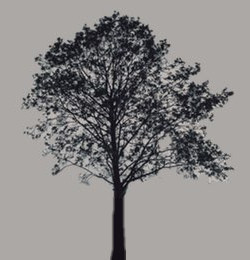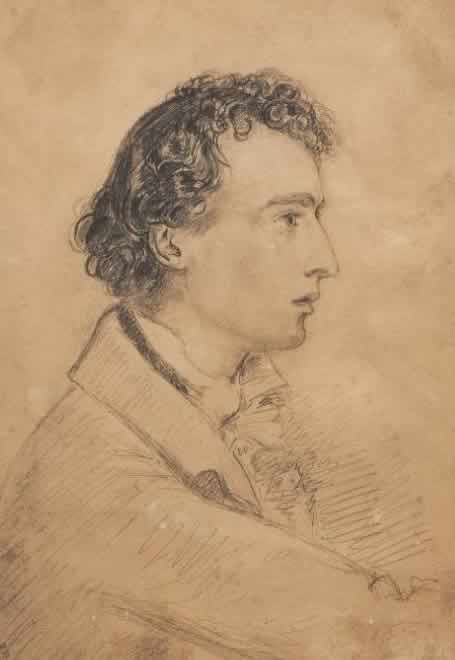9 December 1820: Too Noble an Animal,
Despair in Every Shape,
& Thanks
Joe
: Dead Poet Talking
Piazza di Spagna, Rome (1800 map)
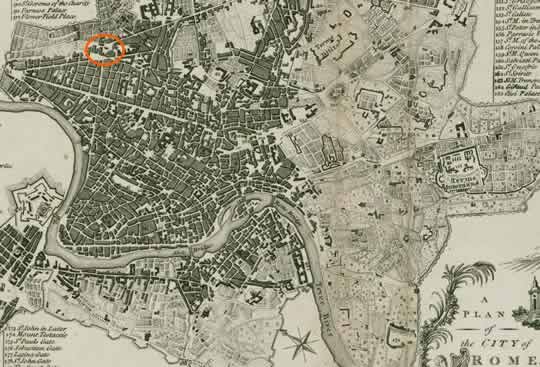
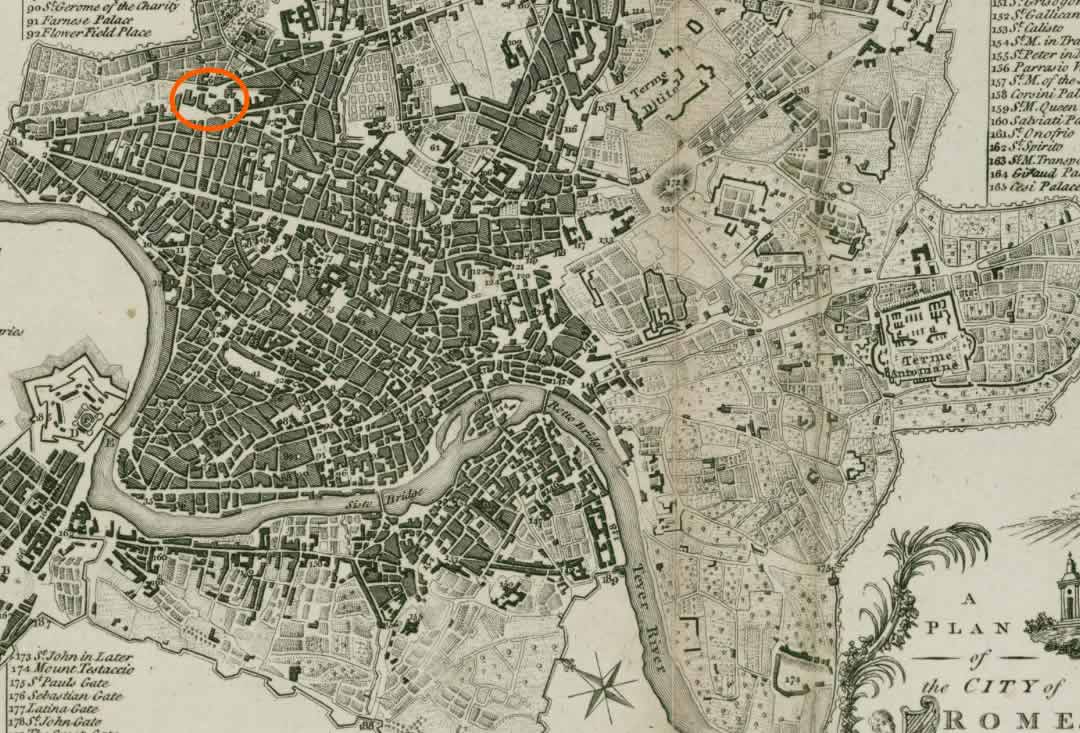
Keats, aged twenty-five, is in Rome, where he has been since 15 November, having left England 18 September. His voyage to Italy is stalled by unfavorable weather, and then the vessel is held for ten days in quarantine upon arrival in Naples, 21 October. Keats travels to Rome with his friend, the painter Joseph Severn. He stays in rooms at 26 Piazza di Spagna.
Keats is in Italy with the doomed hope of restoring his health, though it is clear
he is
dying of consumption, or what we today call pulmonary tuberculosis—the most prevalent
of the
so-called wasting diseases.
This ancient disease (phthisis, so named by Hippocrates
c.400 BCE) has come by other names, like the great white plague
and white
death
—white
because of the anemic appearance of those afflicted. It had also been
called the graveyard cough
and the robber of youth.
Its occurrence may have
climaxed fairly close to Keats’s time, when it was the most pervasive form of death
in the UK.
It has even been called the romantic disease,
since, in its wronged-headed Victorian
cultural associations, there was a fashionably morbid attraction for the disease:
it wistfully
strikes those most delicate, sensitive, and aesthetically refined. The mythologizing
of
Keats’s death is one of the clear precursors for this Victorian type. In a darker
impersonation, consumption was thought to strike those most overly self-indulgent
or
licentious. For some, the illness also carried spiritual associations. Lord Byron at one point (in October 1810), after being thinned by
illness, half-joking apparently says that he hopes he might die of consumption, since
the
ladies will note, [H]ow interesting he looks in dying!
Some precursor symptoms of consumption could have lingered in Keats as long as two
years—initially, at least, perhaps in the form of a chronic sore throat. Keats first
spits
blood in early February 1820—even then he was sure that, in his own words, it signaled
his
death-warrant.
The highly contagious illness (though not confirmed as contagious
until the end of nineteenth century) had already taken his mother and one of his younger brothers, Tom, and he witnessed their slow, agonizing declines. In short,
Keats had been fully exposed to the infectious disease for some time, but the nature
of the
disease at the time is such that Keats could have picked it up just about anywhere.
Millions
will die of TB in Europe during the nineteenth century. [For much more about the nature
of
consumption and Keats’s symptomatology, see 3 February1820.]
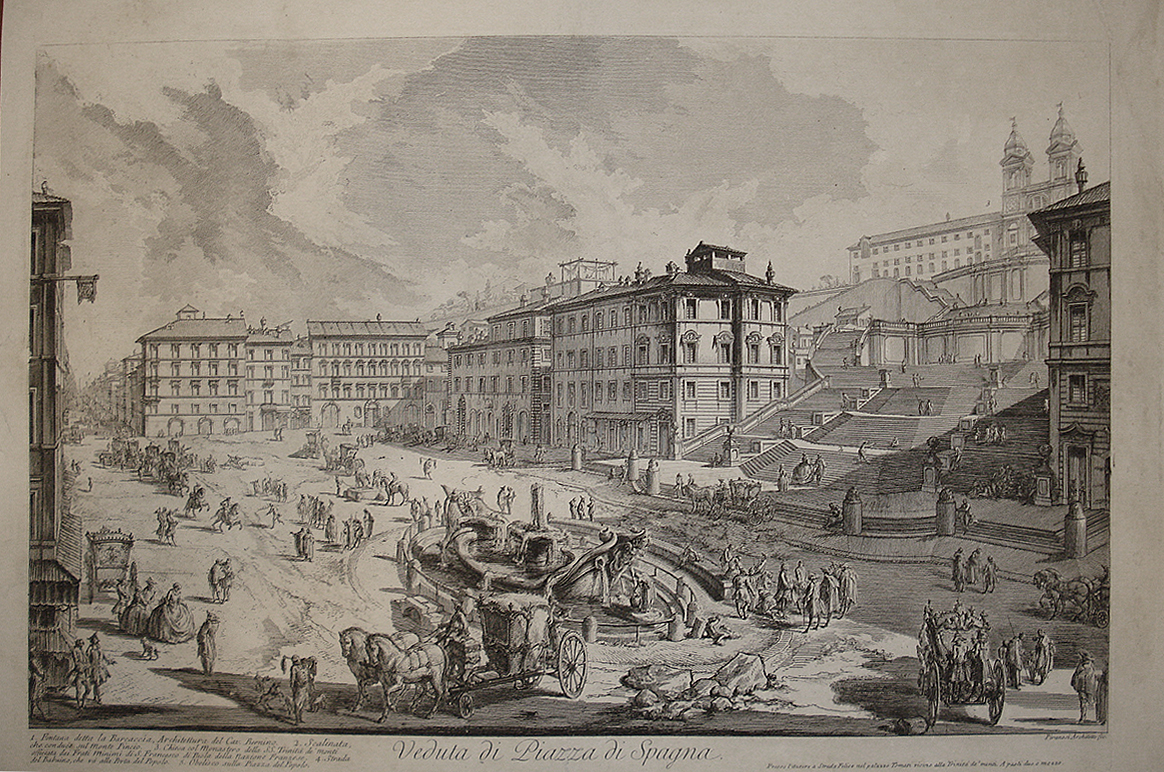
Although December begins with Keats very slightly improved, or at least stabilized,
on 9
December he vomits considerable blood—two cupfuls, reports Severn (14, 17 Dec). This continues over following weeks. In the
last few months, as lesions increase, the symptoms spread to Keats’s stomach from
his lungs.
Keats’s physician, Dr. James Clarke (who found
Keats and Severn their rooms in Rome), though
very attentive to Keats’s condition, has no real course of action to help Keats. No
one does.
Clarke does what he believes is correct: he bleeds Keats and puts him on an extraordinary
restricted diet (of a bit of fish and bread), both of which hugely weaken and stress
the
already enervated and overwrought Keats. Understandably, and aware of his condition,
Keats
acts fretfully; he wants to kill himself; his life, he believes, is already over.
As he writes
at the end of November, I am leading a posthumous existence.
Dead poet talking.
Yet Clarke, in writing to Keats’s publisher (the
firm of Taylor & Hessey) toward the end of November, believes that if he can put Keats’s
mind at ease I think he’ll do well [. . .] he’s too noble an animal to be allowed
to sink
without some sacrifice being made to save him.
Interesting, Clarke is not so sure that
Severn is the right person to care for Keats: he writes that Severn is attentive,
but
he adds that he might not be the best suited for his companion.
He might be suggesting
that Severn is simply not experienced given
required care-giving, but he could also be saying the Severn’s disposition itself
might
overwrought, and therefore not be helpful.
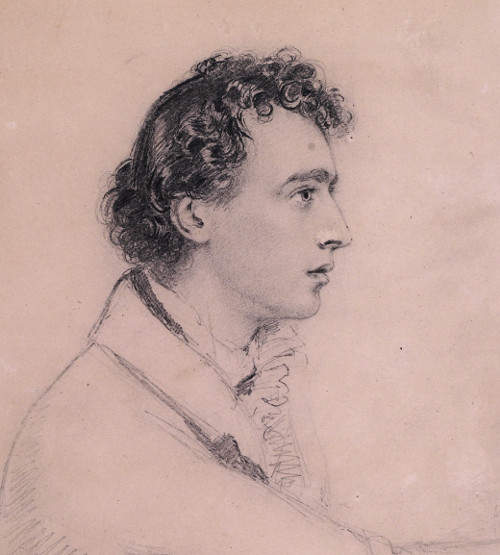
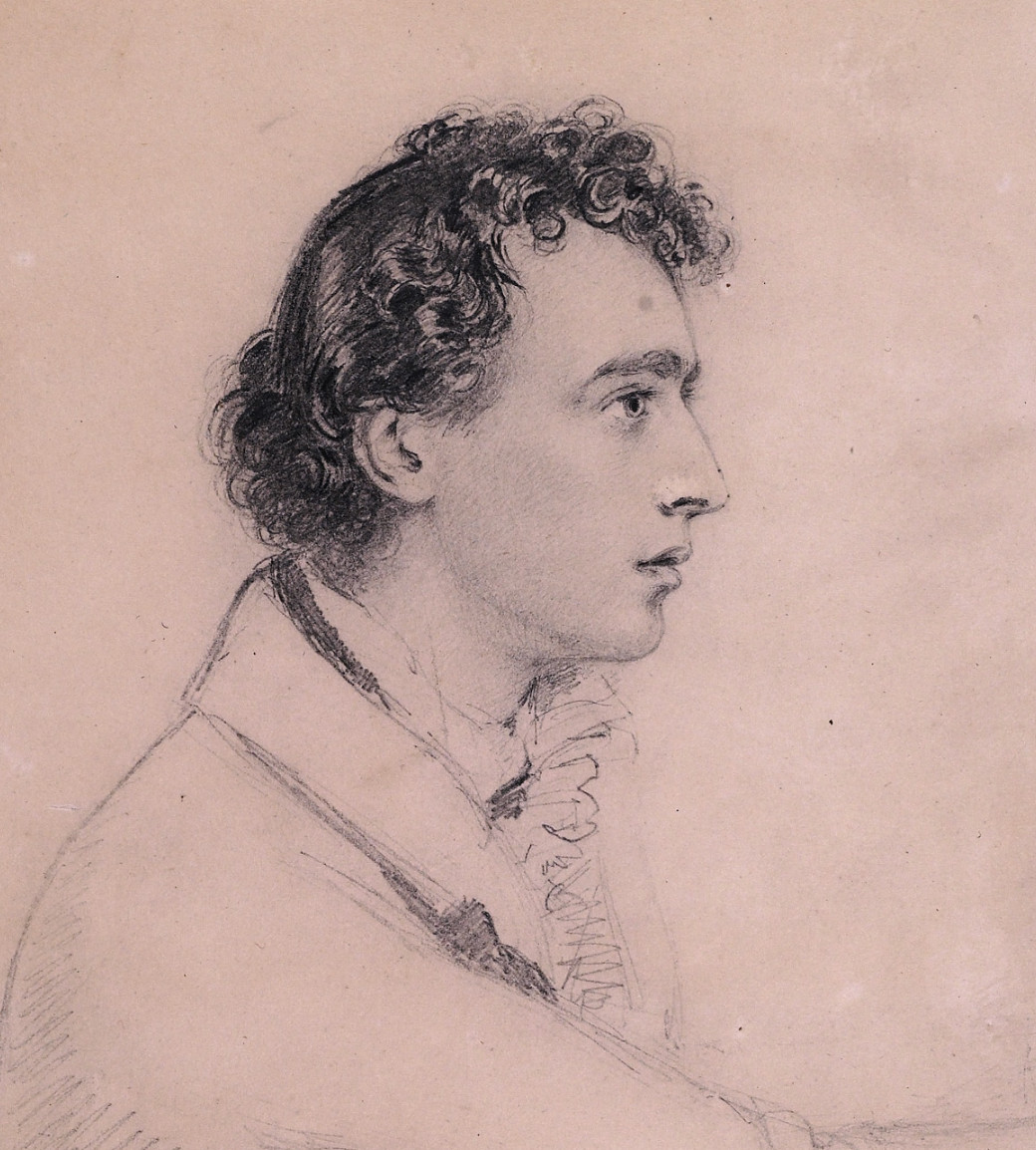
Severn reports to Keats’s friends back in
England. He describes Keats’s grim state of exhaustion, depression, hopelessness,
and
suffering. On 17 December, Severn writes to Keats’s closest friend at the time, Charles Brown (with whom Keats intended to travel to
Italy). Severn does not shy away from the gruesome details of Keats’s state: Keats’s
blood is
black and thick in the extreme. Keats was very much alarmed and dejected [ . . . ]
The
blood broke forth again in like quantity the next morning—and the doctor thought it
expedient to take away the like quantity of blood [ . . . ] the torture he suffers
all and
every night [ . . . ] the distended stomach keeps him perpetual hunger or craving
[ . . . ]
Then his mind is worse than all—despair in every shape—his imagination and memory
present
every image in horror, so strong that morning and night I tremble for his Intellect.
There are also money issues arising with rent for the apartment; and now the landlord
knows
that Keats has consumption, which is problem.
Severn, then, is himself utterly exhausted, and beginning to suffer from the stress—trauma,
even—of helplessly caring for Keats. As Brown points out in a letter to Keats of 21
December,
the anagram for John Keats
of Thanks Joe
is more fitting than ever. It will be
at least another month before Severn is able to reconcile himself to Keats’s coming
death.
On the day before Christmas, Severn reports Keats saying that his continued stretch of his imagination has already killed him. Keats wishes that no record of his death be noted. Given his terrible suffering and fears, it is understandable that he simply wants to disappear—to be no more.
